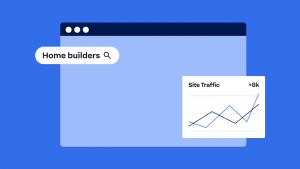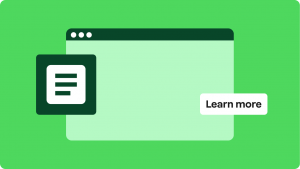Key takeaways:
- Print ads build trust and brand recall, while digital ads drive quick, measurable results.
- Using both print and digital ads together can boost your campaign results by up to 400%.
- Consistent branding across all channels strengthens recognition and customer confidence.
Print ads and digital ads are everywhere. You see them in magazines, on websites, in your mailbox, and on your phone. Businesses have used these two types of ads for many years to convey their message and connect with customers.
Over time, advertising has changed a lot. Print ads were once the main way to promote products. Now, digital ads are used more often because they are fast and easy to track. But even these days, print ads haven’t disappeared. In fact, using both print and digital ads together can help brands get the best results.
This article explains what print and digital ads are, how they’re different, and why using both is a great strategy. You’ll learn how to mix them in your marketing plan to get more people to notice your brand, trust it, and take action.
What is print advertising?
Print advertising means using paper to share ads with people. These ads can be found in newspapers, magazines, flyers, brochures, and even in the mail. For a long time, this was the main way businesses told people about their products and services.
Print ads are still useful today. Many people trust them more than ads they see online. In fact, a study showed that 82% of people trust print ads more than digital ads. That’s because print feels real—you can hold it in your hands, read it slowly, and remember it better.
There are different types of print ads that were used to promote products and services, this includes:
- Magazine. Great for reaching people who enjoy reading about certain topics.
- Newspapers. Good for sharing local news and deals.
- Direct mail. Ads that are sent right to someone’s home.
- Brochures and flyers. Small booklets or sheets that provide more detailed information.
Big companies like IKEA and Rolex still use print marketing ads today. They know that these ads help people remember their brand and build trust over time.
What is digital advertising?
Digital advertising refers to displaying ads on screens. These ads appear on websites, social media platforms, search engines like Google, and even within apps on your phone or tablet. Digital ads have become increasingly popular over the last decade.
One big reason is that they are fast and easy to track. When someone clicks on a digital ad, such as a pay-per-click (PPC) ad, businesses can view it immediately. They can also find out how many people saw the ad, how many clicked on it, and how many made a purchase because of it. This helps businesses know what’s working.
Digital ads are also effective at targeting the right audience. For example, if you’ve been looking at shoes online, you might start seeing ads for shoes on other websites. This is called retargeting. It helps remind people to return and make a purchase.
Digital ads are typically less expensive than print ads, and they can reach a significantly larger audience more quickly. Big companies, such as Amazon, have mastered digital campaigns, using programmatic ads, search engine marketing, and retargeting strategies to drive sales on a massive scale.
Print vs digital ads: What’s the difference?
Print ads and digital ads are both useful, but they work in different ways. Here’s a simple side-by-side look:
| Feature | Print ads | Digital ads |
| How you see them | On paper (magazines, mail, newspapers) | On screens (phones, computers, tablets) |
| Trust level | Very high – people trust them more | Lower – people see lots of online ads |
| Cost | Usually more expensive to make and send | Often cheaper and easier to change |
| Speed | Takes longer to print and deliver | Can be seen right away |
| Tracking | Harder to measure results | Easy to track clicks and sales |
| Targeting | Reaches a general audience | Reaches specific groups of people |
Print advertisements are great for building trust and helping people remember your brand. Digital ads are more effective for achieving fast results, tracking, and targeting the right people at the right time.
Each one has its challenges. Printing can cost more and take longer. Digital ads can be easily ignored because people are exposed to numerous ads every day. But when you use them together, they help each other—and your whole campaign becomes stronger.
Why combining print and digital ads creates the perfect marketing mix
Studies show that when businesses use both print and digital ads in the same campaign, their results can be up to 400% better than using just one. That’s because people see your message in more places—and it sticks.
Here’s how the mix works:
- Print grabs attention and builds trust.
- Digital prompts people to take action—such as clicking, signing up, or making a purchase.
- The mix provides your audience with more opportunities to connect with your brand.
For example, a flyer with a QR code can lead someone to your website. A magazine ad can make your name stick—and later, that person might click on your online ad. When both print and digital work side by side, your message becomes stronger.
Tips for integrating print and digital ads into your marketing strategy
Now that you know why print and digital ads work well together, let’s look at some easy ways to use both in your marketing plan. Here are some helpful tips:
- Set clear goals for each ad type. Use print ads to build trust and help people remember your brand. Use digital ads to get quick actions, like clicks, sign-ups, or sales.
- Connect print to digital. Add QR codes, short website links, or social media handles to your print ads. This helps people move easily from your printed materials to your online content, like a product page or sign-up form, social media pages and websites. If you don’t have a website yet, you can build one and get started using our AI Website Builder—no coding required.
- Keep your message and look the same. Use the same colors, logo, and message in both print and digital ads. If your print ad promotes “20% off this week,” make sure your digital ads and website match that message. This helps people recognize your brand no matter where they see it.
- Use tools to track your success. You can use things like special landing pages, promo codes, or call tracking to see how well your print ads are working. On the digital side, you can use tools like Google Analytics to help you track clicks, views, and more.
- Know your audience. Younger people might see your ads online first, while older people may notice a print ad in the mail. By using both, you can reach everyone in the way they like best.
What’s next for your marketing
While technology evolves fast, the way businesses reach people is changing too. One of the biggest shifts happening right now is the use of AI in marketing. AI-powered tools are helping businesses do things faster—like creating ad copy, testing different designs, and even choosing the best time to show an ad to someone.
Soon, we’ll see more personalized ads that feel less like marketing and more like helpful suggestions. AI will make it easier to connect print and digital—like scanning a printed flyer that launches a video tailored just for you. These tools won’t replace your strategy—but they’ll make it stronger, smarter, and faster.
To stay ahead, it’s important to keep learning and adapting. You can check our blog to explore the latest trends, tools, and how-to guides. And if you want to enhance your online visibility, we offer online marketing services, including pay-per-click (PPC) ads, SEO services, and Pro business directories. It’s built to help you create marketing that works today—and tomorrow.
Frequently asked questions
Even in the digital age, print advertising still offers unique benefits that digital ads can’t fully replace. Print ads create a tactile experience that can lead to higher response rates, especially when targeting a specific audience. Print materials, such as magazines, newspaper advertisements, and direct mail, offer a physical presence that helps build trust and brand recall.
For local outreach, print media such as local newspapers and printed materials like flyers or postcards can be highly effective. These formats often reach readers who aren’t active on digital channels. However, combining both print and digital advertising in your marketing strategy ensures you’re connecting with your target audience across all touchpoints.
Print ads just feel more personal. They stick around longer and don’t get lost in the noise, unlike digital advertisements, which often do. A flyer or brochure creates a tactile experience, which builds trust. And when it comes to purchase decisions, that trust can make a big difference.
A strong digital marketing strategy can amplify the reach of a print marketing campaign. For example, including a QR code in a print advertisement can direct readers to an online digital campaign or landing page. This allows businesses to track engagement, gather data, and convert more potential customers—all while benefiting from the relatively low costs of digital tools.




